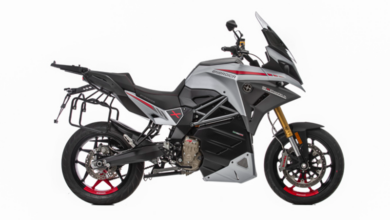UTV sales survey: Most dealers down vs. 2008
By Neil Pascale
Editor
A segment that had avoided the downturn in the off-road market in recent years has begun to show some retail sales deterioration.
That was the conclusion of a national 150-dealer survey conducted for Powersports Business on the UTV market.
The majority of dealers surveyed — 57.5 percent — reported a decrease in UTV sales over the year-ago period. Another fourth of the surveyed dealers said their side-by-side sales were on par with a year ago while 10 percent reported increased sales.
Those dealers that were down from a year ago have seen their UTV retail sales decline by an average of 30 percent.
“That’s tracking with what we’re seeing across the country,” said Vince Iorio, a member of the Kawasaki Motors Corp., USA product management team.
The survey examined the UTV market in its entirety, including both the utility and sport segments in its retail sales questions. The survey, conducted in July by Irwin Broh & Associates, is the only one of its kind in the industry as UTV retail sales are not tracked by any industry group, including the Motorcycle Industry Council (MIC).
The annual UTV retail sales survey looked at a number of category-relevant issues, including dealers’ gross profit margin, accessory sales, customers’ top reasons for buying UTVs and what category — sport or utility — has seen the most demand.
Officials familiar with the market say UTV retail sales grew last year, although by a much smaller percentage than what was seen in recent years. Still, the side-by-side market presented a bright light in what has been a struggling off-road market, marked by the ATV segment’s year-over-year retail sales losses.
Side-by-sides — those sold by the five major powersports OEMs — now account for more than 140,000 annual retail sales, according to industry sources. That makes UTVs in line with off-highway motorcycles as the industry’s third-largest annual retail sales category behind on-road motorcycles and ATVs.
2009 sales
Powersports new unit sales as a whole were down more than 40 percent in the first half, according to data reflecting MIC-reporting companies. Did UTV sales follow that pattern?
Dealers were essentially split on that in the survey. Little more than half said in the past several months UTV sales were down about the same as other vehicle sales. However the other half of dealers were divided on whether side-by-side sales were down less than other vehicles or down more than other vehicles.
Regardless of the volume, the gross profit margin for UTVs has reduced dramatically from a year ago, the survey found. Dealers reported their average gross margin percentage was
10 percent this year, a sizeable drop from the 18.4 percent reported in the 2008 survey.
One similarity to last year: UTV gross margin percentage remains on average higher than ATVs. Dealers reported their average ATV gross margin is 9 percent. That also has dropped from last year, declining nearly 4 percentage points.
Could there be a rebound for UTV sales in the second half?
Arctic Cat Marketing Director John Tranby has seen the company’s Prowler sales rebound in the past three months so the company’s 2009 sales over that period have largely mirrored results from a year ago.
And like 2008 and the previous couple of years, Tranby has seen Prowler sales outperform core ATV sales in terms of retail sales percentage.
“The ATV business has not picked up as much as the Prowler has in the past three months,” Tranby said.
Kawasaki’s Iorio notes the brand’s Teryx, its recreational-aimed UTV, is still increasing in retail sales volume over last year due to the fact that it’s still new to the market and because it is still gaining consumer awareness.
“We’re forecasting growth in the future,” Iorio said of the UTV segment, “and optimistic because this segment has created a tremendous amount of interest among potential future customers and it’s still in its infancy.”
A tightening of retail credit is certainly playing a role in reduced UTV sales, most surveyed dealers reported. Eighty percent of dealers said the credit crunch has either affected their UTV sales “a lot” or “somewhat.”
One eventual result of that tightened credit will be felt at the OEM wholesale level. Only
16 percent of dealers said they plan on taking on more UTV inventory in the coming year. That percentage was more than twice that number just a year ago.
That dealer inventory figures to heavily focus on utility-oriented side-by-sides. Seventy percent of dealers reported more consumer demand for utility UTVs than sport UTVs. That comes despite the success market share leader Polaris has had with its RZR, a sport-oriented side-by-side.
The demand for utility-oriented UTVs has increased over a year ago. The percentage of dealers reporting a stronger demand for utility last year was at 62 percent.
The interest in utility as found in the dealer survey mirrors what Kawasaki found when it recently conducted its own dealer research, Iorio says. Kawasaki found utility in most demand in the East and in the middle of the United States. “The West is more sport-oriented due to its wide open spaces and those populations like the Teryx’s combination of sportiness with some utility,” Iorio said.
Arctic Cat’s Tranby notes it’s likely the UTV demographic in terms of segment preference could be following the ATV market, which sees more than 80 percent of its sales geared toward its utility segment.
While there are significant changes in the UTV sales volume, there appears to be some similarities to a year ago. Namely that the category continues to win over ATV shoppers. Dealers put that percentage of shopper who comes in looking for an ATV and winds up purchasing a UTV at about 10 percent. That statistic remains largely unchanged from a year ago.

